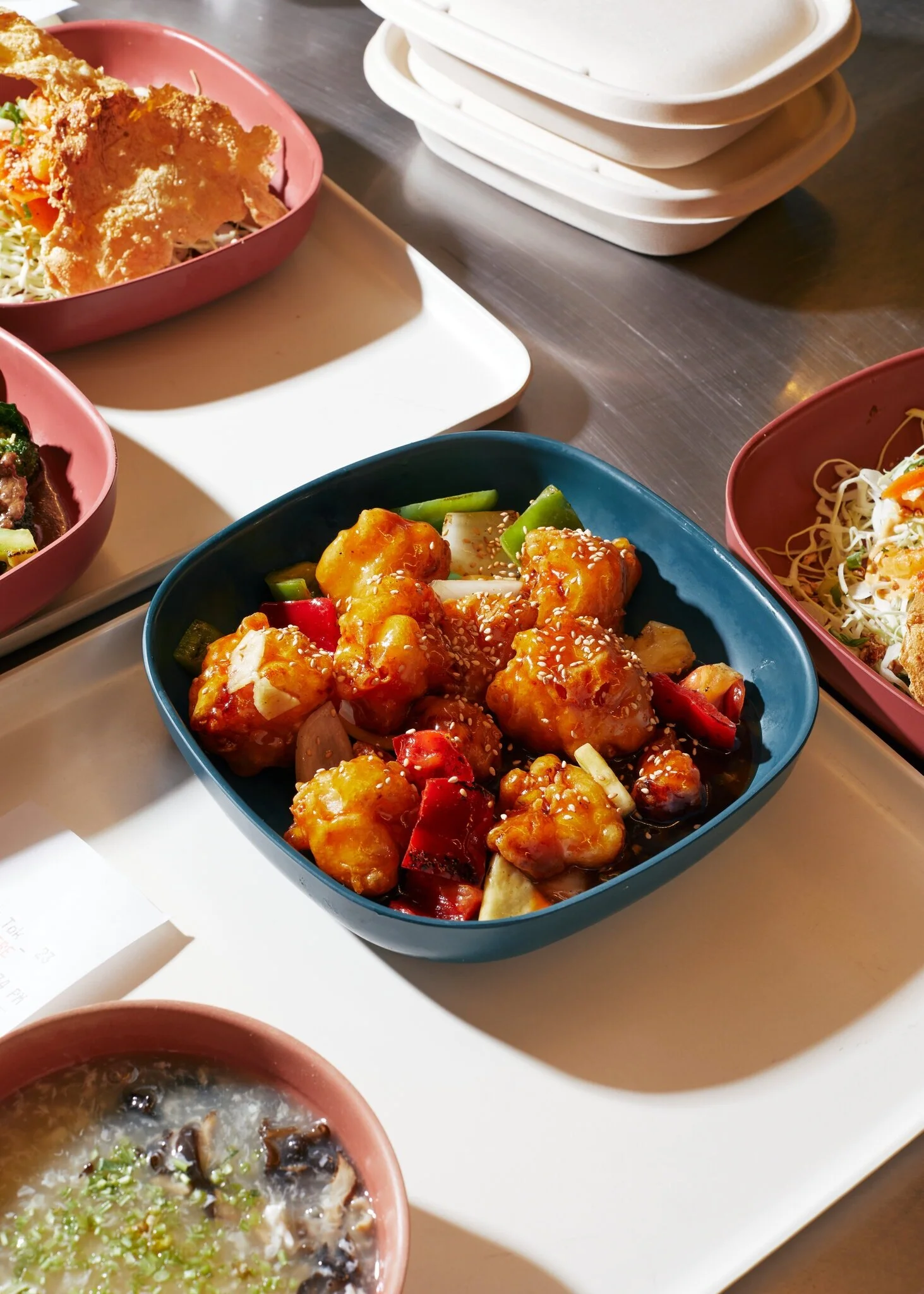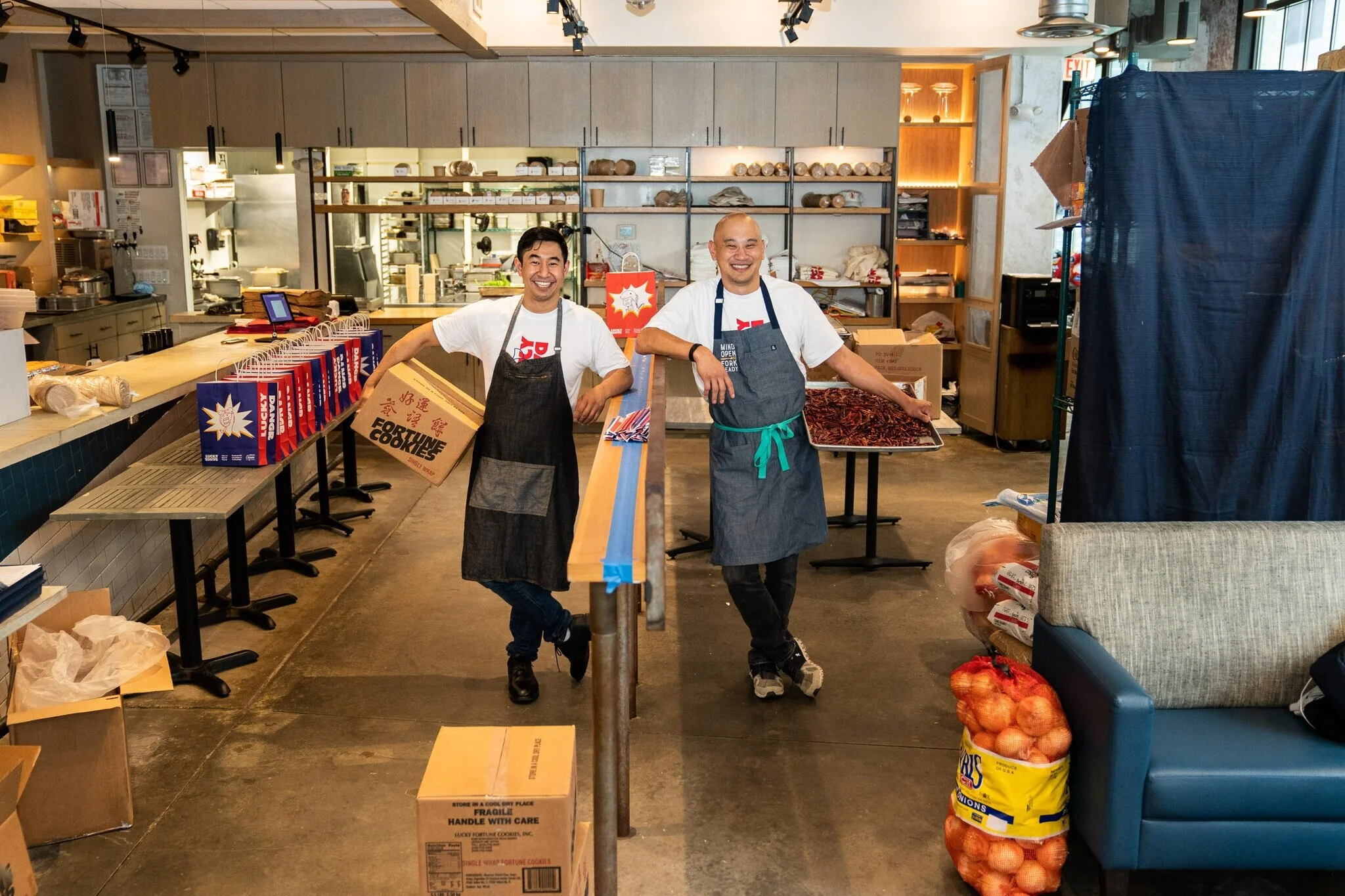More Than ‘Just Takeout’
In 1983, Tim Ma’s parents opened Bamboo Garden in Conway, Ark. It was a side hustle — his mother was in graduate school, and his father worked full-time as a medical technician. As owners of the only Chinese restaurant in their small town, the Mas made good money in their first year. But it wasn’t without setbacks. There was the brick hurled into their family’s home, the drunken driver who crashed into the restaurant’s dining room and the eventual arrival of competition, when their talented chef opened his own restaurant across the street.
The struggles the Mas endured informed their son’s future career in food, and his new restaurant, Lucky Danger. The Washington, D.C., takeout spot, which he opened with Andrew Chiou in November, is a reflection of the Asian American experience, he said.
“It is a kind of respect for our elders,” Mr. Ma said of Lucky Danger. “That’s a little bit of the mission here.”
“We crafted Lucky Danger around our Asian American experiences,” said Tim Ma, right, of the Washington, D.C., restaurant he opened with Andrew Chiou, left.Credit...Shuran Huang for The New York Times
Billed as “American Chinese by a Chinese American,” Lucky Danger serves many of the American Chinese classics that Bamboo Garden once did — lo mein and fried rice dishes, orange beef, cashew chicken — as well as less conventional offerings inspired by the chef’s personal tastes and experiences, including a Taiwanese-style omelet with dried radish and a whole branzino dish.
Lucky Danger joins a new generation of American Chinese takeout restaurants redefining how this food is regarded. Historically, “most Chinese eaters have really disdained Americanized Chinese food,” said David R. Chan, a historian and archivist of Chinese food in America. Intimately aware of Chinese food’s long and complicated history in the United States, the owners and chefs behind this new crop of restaurants are proud of their Americanized offerings. With a more modern emphasis on branding, marketing and operations, they’re transforming what Chinese takeout can be.
“American Chinese food is a really great case study in how cultures come together,” said Lucas Sin, the executive chef and co-owner of Nice Day Chinese Takeout, which opened in New York City’s Greenwich Village last summer. Having grown up in Hong Kong and attended college in the United States, Mr. Sin is fascinated by the cuisine’s ability to absorb influences from all over. Nice Day’s website describes American Chinese food as “a wonderfully inventive and flavorful regional Chinese cuisine.”
The notion of American Chinese food as a legitimate subcategory of Chinese cooking is a fairly recent and radical idea, according to Mr. Chan. That sensibility is on full display at Lucky Danger and Nice Day, as well as at San Francisco takeout shops Mamahuhu and Lazy Susan, where the owners are committed to the classics — at least from a culinary standpoint.
“People chalk it up to ‘just takeout,’ but what I see is a lot of ingenuity, observation and a lot of skill,” said Brandon Jew, the chef-owner at San Francisco’s lauded Mister Jiu’s and the owner of Mamahuhu, a casual American Chinese restaurant that opened in January of last year. “No question, that is why people love it so much — because there was so much thoughtfulness in how it was done.”
Traditionally, meat is used sparingly to stretch across vegetables and rice, a resourceful hallmark of the cuisine. Even the precise way the chicken is cut for a sweet-and-sour dish contributes to the overall experience of eating it, Mr. Jew said. Inspired by historical recipes, the sweet-and-sour sauce at Mamahuhu is made with pineapple juice, honey and hawthorn berries, which impart an earthy flavor and reddish tint.
“As much as I am interested in Chinese food on the mainland, because I’m cooking for an American audience, I’m interested in what Chinese chefs have done here, too,” he said.
Chinese food’s evolution in America goes back more than 150 years, and can be traced to the first wave of immigration in the 19th century, when mostly Taishan men found work in the United States as laborers. After taxes aimed at foreign workers and violent attacks effectively barred many immigrants from holding jobs, some of them opened restaurants, offering humble stir-fries with no direct parallels in China, said Jennifer 8. Lee, the author of “The Fortune Cookie Chronicles,” a history of Chinese food in America. The cooking was improvisational, a means of survival rather than a point of pride. Dishes like moo goo gai pan and chop suey — which roughly translates to “odds and ends” — were the beginnings of a culinary tradition.
“The recipes that are American Chinese were created by people who were forced to cook for a living,” Ms. Lee said, “and they developed a series of dishes that served the American palate.” Many of the dishes followed a formula: a protein that was familiar to American eaters with quickly stir-fried vegetables, covered in a thick sauce and served with rice. The addition of bean sprouts, water chestnuts and baby corn provided texture, and was seen as an exciting novelty for non-Chinese eaters, Ms. Lee said.
The Chinese Exclusion Act of 1882 largely limited mainland China’s influence on the cuisine. But it did not stymie the expansion of Chinese restaurants in America, which continued to proliferate in cities and suburbs. Chinese chefs adopted ingredients that had become fashionable in the United States, such as broccoli. The tiki-bar craze of the mid-20th century, which fetishized an imagined South Pacific landscape, trickled into American Chinese restaurants by way of appetizers like crab Rangoon.
The Immigration and Nationality Act of 1965 ushered in a new wave of immigrants from China and Taiwan, including trained cooks who introduced American diners to a broader variety of regional cuisines, and expanded the repertoire of Chinese food enjoyed in the United States.
“All the sudden you’re getting what you might call authentic Cantonese food from Hong Kong,” Mr. Chan said. Yet even as they introduced dishes from provinces like Hunan and Sichuan (and opened restaurants bearing those names), catering to local palates often meant adapting them beyond recognition — a kung pao chicken that’s more sweet than spicy, or a deep-fried cashew chicken born out of a Springfield, Mo., restaurateur’s failure to tempt residents with Cantonese seafood dishes.
“Chinese restaurant owners are very resourceful,” said Mr. Chan. “They were able to find their niche quickly and roll with the times.”
The emphasis on takeout and delivery was just another way these restaurateurs’ tried to “meet Americans where they were,” said Ms. Lee. In the 1970s and ’80s, the American family increasingly consisted of two working parents who sought convenient meals. While takeout options were largely limited to pizza and fast food, Chinese restaurants offered families more variety and healthier options, like shrimp with snow peas and beef with broccoli, Ms. Lee said.
With the cuisine’s growth came backlash. The “Chinese-restaurant syndrome” hoax has long fueled stigma regarding the consumption of Chinese food and monosodium glutamate (MSG) — a flavor enhancer used in most processed foods. While some Chinese American restaurateurs have struggled to shake off assumptions of American Chinese food as cheap and inauthentic, and others have chosen to break from the takeout model and go upscale, the owners and chefs at Lazy Susan, Lucky Danger, Mamahuhu and Nice Day are proud of the cuisine’s affordable and accessible legacy.
At Lazy Susan, opened by Hanson Li, left, and Tiffany Yam, center, the contrast of American and Chinese influences on the cuisine is front and center. The menu was developed by Eric Ehler, right.Credit...Aaron Wojack for The New York Times
Hanson Li, a co-founder of Lazy Susan, recalled the Chinese restaurant he frequented growing up in Rochester, N.Y. It served home style Chinese dishes, like zha cai rou si mian — noodles with shredded pork and pickled mustard greens — as well as dishes his immigrant parents would not have recognized as Chinese. But each “was delicious in its own way,” Mr. Li said.
Glazed and fried dishes like General Tso’s chicken felt indulgent by contrast.
“Eating that crab Rangoon was a childhood treat for a lot of us,” Mr. Li said.
The takeout-only menu at Lazy Susan, which opened in February, was designed by Eric Ehler, a chef and consultant, and celebrates that duality. The contrast of American and Chinese influences on the cuisine may be best showcased by the “garlic broccolis” dish featuring sautéed Chinese and broad-crown varieties.
Lazy Susan and Nice Day hope to expand their businesses with more locations. The biggest challenge to growth is training cooks who can master the fast wok cooking the cuisine requires — a skill not taught by American culinary institutions. According to Yong Zhao, a co-founder and chief executive of Nice Day, America’s Chinese restaurants are facing a “generational cliff” as older operators retire and their children climb the economic ladder. But there hasn’t been a commensurate decline in demand for American Chinese food.
“I think people should continue to crave it and get it, but without a new generation of stewards it won’t be sustainable,” Mr. Zhao said.
Lazy Susan, Lucky Danger, Mamahuhu and Nice Day look a lot like the beginnings of that new guard. And their owners are only learning from their predecessors — like Mr. Ma from his parents, or Tiffany Yam, a co-founder of Lazy Susan, from her father, David Yam, who has owned Chinese restaurants in the United States for nearly 30 years.
“I think a lot of Asian restaurants in general serve a big menu and they can’t handle it,” said Mr. Yam. “Doing well on each thing and improving it is better.”
Consistency is key, he said, something these newer restaurants have taken to heart. All four businesses offer much leaner menus than those at the typical American Chinese restaurant, which can often list more than 100 items. Ms. Yam’s Lazy Susan has a more pared-down menu than any of her father’s restaurants ever did.
Despite the many challenges a nascent takeout spot can face — opening during a pandemic among the toughest of them — Mr. Yam is proud that his daughter chose to get into the business of making Chinese food, and is happy to share trade secrets.
“He’s really happy now because I’m calling him like, ‘Dad, how did you make your crab Rangoon?’” Ms. Yam said.



